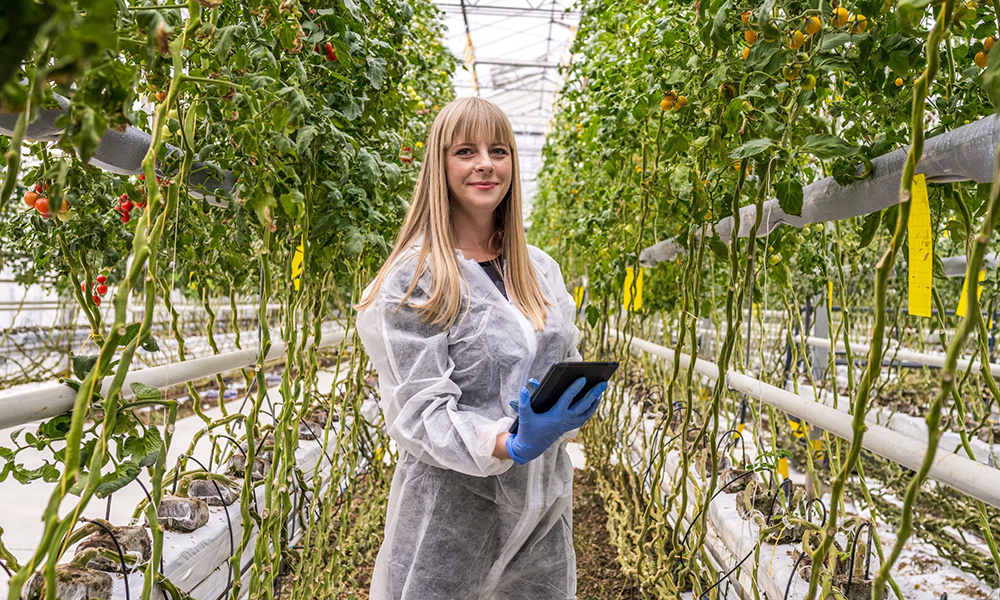
我們正進入綠色技能的時代,但說到底,什么是綠色技能?企業表示,綠色人才或具有氣候相關工作經驗的員工需求越來越大,而且各國各行業這一趨勢都很明顯。
需求相關技能的企業數量也在增加。領英(LinkedIn)一份報告顯示,2022年至2023年間需要至少一項綠色技能的職位平均增加了22%。
企業比以往更需要受過綠色技能培訓的員工,或者說人們從氣候相關工作或綠色技術領域學到的經驗,然而只有八分之一的員工真正掌握相關技能。在當今就業環境中,掌握綠色技能的員工找到工作的速度更快,主要進入電動汽車、石油和天然氣以及金融等行業。受過綠色技能培訓的勞動力很重要,隨著強風暴、海平面上升、熱浪和干旱等災害日漸頻繁,全球變暖情況已然很糟,今后情況也不容樂觀。
領英分析寫道,受過綠色技能培訓的勞動力可“加速向綠色經濟過渡”,也有助于融入氣候知情政策。
過去五年中,需求綠色技能的工作崗位增長了9%以上,而掌握相關技術的員工比例僅增加了5.4%。報告發現,在墨西哥、印度和法國等納入研究的48個國家中,領英上明確列出需要綠色工作或技能的員工數都在增加。報告還發現,在研究的每個國家,具有綠色技能的員工找到新工作的幾率都比不具備綠色技能的人要高。2022年至2023年,綠色人才在勞動力中的比例中位數上升了12%,但供給仍跟不上技能需求。至少需要一項綠色技能的招聘崗位數量增速是原先兩倍。
英國可持續發展專業教授莎拉·斯特拉坎告訴《財富》雜志,“從最簡單層面上講是供需問題”,她的研究成果“顯示技能市場越來越全球化”。
“提升現有勞動力技能的需求很強烈,”她說。
從實際情況來看,掌握綠色技能的員工對能源生產、運輸和金融等碳密集度最高或溫室氣體排放量最大的行業至關重要,因為這群人將引領變革。
斯特拉坎表示,最迫切需求的技能“可能是‘軟性’可轉移技能,而不是‘硬性’技術技能。”對軟性技能更高需求代表著從“知識型技能”向“態度型技能”轉變,公司可依靠相關技能在氣候知情基礎上推進發展。
綠色技能可改善全球最大的碳排放源
電力和熱能等能源生產行業是全世界最大的碳排放源,其次是運輸和建筑,全球大部分電力仍然依靠化石燃料。
預計到2050年,全球能源需求將增長47%,中國、德國和印度等市場上風能和太陽能等可再生能源將繼續增加。
行業企業發現具有太陽能、核能發電、供水和灌溉系統等技能的員工比缺乏相關技能的員工吸引力更大。領英報告發現,在研究涉及的各個國家,可再生能源行業中掌握綠色技術的員工就業率也在增長,每當有100名員工離開行業,就有120人加入。2016年以來,石油和天然氣行業的技術員工集中度增加了21%。
清潔能源轉型仍在過程中。報告發現,在澳大利亞和阿聯酋等國,加入化石燃料行業的員工比離開行業的人數更多。在美國、德國、新加坡和法國等國家,離開化石燃料行業比加入行業的人要多,不過減少速度在放緩。
金融比其他行業“綠色轉型更快”
報告顯示,金融業“綠色轉型速度比大多數行業快”,行業綠色人才同比增長近15%。美國發展最快的一些綠色技能包括碳核算或計算組織的溫室氣體排放量,以及飲用水質量、能源工程、碳信用和排放以及能源審計等。
這一有影響力的行業是應對氣候變化所需的“轉型關鍵推動者”,也是支持氣候企業家獲取資本、鼓勵氣候友好型投資以及激勵金融機構加大投資應對氣候變化展開對話的平臺。
向清潔能源經濟過渡
向綠色經濟的過渡正在進行中。與加拿大的《可持續就業計劃》(Sustainable Jobs Plan)和歐洲綠色協議類似,美國的《通脹削減法案》(Inflation Reduction Act)也是眾多計劃之一,各大計劃將資金用于創造注重應對氣候變化的就業機會。其中美國的計劃2022年8月已簽署成為法律,創造了超過17萬個清潔能源就業機會。聯合工會和環保組織的藍綠聯盟(BlueGreen Alliance)稱,到2032年該法案創造的就業機會將達900萬個。
接下來要采取的過渡步驟包括改變工作崗位本身。報告發現,為了加強對可持續性的重視,“工作本身”必須“不斷發展”從而承擔更多氣候方面的責任,例如政策建議或設施管理等。 (財富中文網)
譯者:梁宇
審校:夏林
我們正進入綠色技能的時代,但說到底,什么是綠色技能?企業表示,綠色人才或具有氣候相關工作經驗的員工需求越來越大,而且各國各行業這一趨勢都很明顯。
需求相關技能的企業數量也在增加。領英(LinkedIn)一份報告顯示,2022年至2023年間需要至少一項綠色技能的職位平均增加了22%。
企業比以往更需要受過綠色技能培訓的員工,或者說人們從氣候相關工作或綠色技術領域學到的經驗,然而只有八分之一的員工真正掌握相關技能。在當今就業環境中,掌握綠色技能的員工找到工作的速度更快,主要進入電動汽車、石油和天然氣以及金融等行業。受過綠色技能培訓的勞動力很重要,隨著強風暴、海平面上升、熱浪和干旱等災害日漸頻繁,全球變暖情況已然很糟,今后情況也不容樂觀。
領英分析寫道,受過綠色技能培訓的勞動力可“加速向綠色經濟過渡”,也有助于融入氣候知情政策。
過去五年中,需求綠色技能的工作崗位增長了9%以上,而掌握相關技術的員工比例僅增加了5.4%。報告發現,在墨西哥、印度和法國等納入研究的48個國家中,領英上明確列出需要綠色工作或技能的員工數都在增加。報告還發現,在研究的每個國家,具有綠色技能的員工找到新工作的幾率都比不具備綠色技能的人要高。2022年至2023年,綠色人才在勞動力中的比例中位數上升了12%,但供給仍跟不上技能需求。至少需要一項綠色技能的招聘崗位數量增速是原先兩倍。
英國可持續發展專業教授莎拉·斯特拉坎告訴《財富》雜志,“從最簡單層面上講是供需問題”,她的研究成果“顯示技能市場越來越全球化”。
“提升現有勞動力技能的需求很強烈,”她說。
從實際情況來看,掌握綠色技能的員工對能源生產、運輸和金融等碳密集度最高或溫室氣體排放量最大的行業至關重要,因為這群人將引領變革。
斯特拉坎表示,最迫切需求的技能“可能是‘軟性’可轉移技能,而不是‘硬性’技術技能。”對軟性技能更高需求代表著從“知識型技能”向“態度型技能”轉變,公司可依靠相關技能在氣候知情基礎上推進發展。
綠色技能可改善全球最大的碳排放源
電力和熱能等能源生產行業是全世界最大的碳排放源,其次是運輸和建筑,全球大部分電力仍然依靠化石燃料。
預計到2050年,全球能源需求將增長47%,中國、德國和印度等市場上風能和太陽能等可再生能源將繼續增加。
行業企業發現具有太陽能、核能發電、供水和灌溉系統等技能的員工比缺乏相關技能的員工吸引力更大。領英報告發現,在研究涉及的各個國家,可再生能源行業中掌握綠色技術的員工就業率也在增長,每當有100名員工離開行業,就有120人加入。2016年以來,石油和天然氣行業的技術員工集中度增加了21%。
清潔能源轉型仍在過程中。報告發現,在澳大利亞和阿聯酋等國,加入化石燃料行業的員工比離開行業的人數更多。在美國、德國、新加坡和法國等國家,離開化石燃料行業比加入行業的人要多,不過減少速度在放緩。
金融比其他行業“綠色轉型更快”
報告顯示,金融業“綠色轉型速度比大多數行業快”,行業綠色人才同比增長近15%。美國發展最快的一些綠色技能包括碳核算或計算組織的溫室氣體排放量,以及飲用水質量、能源工程、碳信用和排放以及能源審計等。
這一有影響力的行業是應對氣候變化所需的“轉型關鍵推動者”,也是支持氣候企業家獲取資本、鼓勵氣候友好型投資以及激勵金融機構加大投資應對氣候變化展開對話的平臺。
向清潔能源經濟過渡
向綠色經濟的過渡正在進行中。與加拿大的《可持續就業計劃》(Sustainable Jobs Plan)和歐洲綠色協議類似,美國的《通脹削減法案》(Inflation Reduction Act)也是眾多計劃之一,各大計劃將資金用于創造注重應對氣候變化的就業機會。其中美國的計劃2022年8月已簽署成為法律,創造了超過17萬個清潔能源就業機會。聯合工會和環保組織的藍綠聯盟(BlueGreen Alliance)稱,到2032年該法案創造的就業機會將達900萬個。
接下來要采取的過渡步驟包括改變工作崗位本身。報告發現,為了加強對可持續性的重視,“工作本身”必須“不斷發展”從而承擔更多氣候方面的責任,例如政策建議或設施管理等。 (財富中文網)
譯者:梁宇
審校:夏林
We are entering the era of green skills, but what are they, anyway? Companies say that green talent, or workers with experience in a climate-related job, are increasingly in demand, which is growing across all sectors and countries.
The number of employers looking for these skills has grown, too. According to a LinkedIn report, between 2022 and 2023, job postings that require at least one green skill have grown by a median of 22%.
Employers are looking for workers who are trained in green skills, or those that people learn in climate-related jobs or green technology, more than ever–yet only one in eight workers have them. In today’s job climate, workers with green skills are getting hired at higher rates and are entering sectors ranging from electric vehicles, oil and gas, and finance. A workforce trained in green skills is important because of how dire the planet’s global warming has become—with intense storms, rising sea levels, and heat waves, and drought just some of the disasters that’s befallen people—and it’s getting worse.
A green skill-trained workforce can “accelerate the transition to a green economy,” the LinkedIn analysis wrote, and help integrate climate-informed policies.
In the last five years, jobs that require green skills grew by over 9% while the share of skilled workers only grew by 5.4%. The number of workers who listed a green job or skill on LinkedIn, the report found, has grown in every one of the 48 countries included in the study, like Mexico, India and France. The report also found workers with green skills have been hired for new jobs at higher rates than those without in each country studied. Between 2022 and 2023, the prevalence of green talent in the workforce rose by a median of 12%, but still, the demand for skills is outpacing the supply. The number of job postings requiring at least one green skill grew twice as quickly.
Sarah Strachan, a professor who teaches sustainability in the UK, told Fortune that “at the simplest level it’s a case of supply and demand,” and that her research “shows that the skills market is increasingly global.”
“There is an urgent need to upskill the current workforce,” she said.
As it turns out, workers with green skills are pivotal to sectors that are the most carbon-intensive or create the most greenhouse gas emissions, like energy production, transportation and finance–because they’ll be leading the change.
The skills in most demand, Strachan said, are “likely to be ‘soft’ transferable skills rather than ‘hard’ technical skills.” The higher demand for soft skills represents a transition from “knowledge-based skills,” to “attitude-based skills,” that companies can depend on to further their climate-informed progression.
Green skills could improve the renewable energy sector, the largest source of emissions in the globe
Energy production, like electricity and heat, is the largest source of carbon emissions in the world, followed by transportation and construction–and the majority of the world’s electricity is still produced from fossil fuels.
The demand for global energy is projected to grow 47% by 2050, and renewable energy sources like wind and solar continue to rise in markets like China, Germany and India.
In the industry, employers are finding workers with skills in solar energy, nuclear electric power generation and water supply and irrigation systems more attractive than those who lack them. The LinkedIn report found employment of green-skilled workers in the renewable energy industry also grew in every country studied, and that for every 100 workers who left the sector, 120 workers joined. Since 2016, the concentration of skilled workers in the oil and gas industry has increased by 21%.
The shift to cleaner energy is still, well, shifting. In some countries, like Australia and the United Arab Emirates, more workers are entering the fossil fuel industry than exiting it, the report found. In others, like the U.S, Germany, Singapore and France, more workers are leaving the fossil fuel industry than entering–but it’s a decelerating decline.
Finance is “greening faster” than other industries
The finance industry is “greening faster than most industries,” according to the report, which found a nearly 15% year-over-year increase of green talent workers in the sector. Some of the fastest growing green skills in the U.S include carbon accounting, or calculating an organization’s greenhouse gas emissions, and skills in drinking water quality, energy engineering, carbon credits and emissions, and energy audits.
The influential industry is “a critical enabler of the transformation” needed to fight climate change, as a platform for conversations on how to support climate entrepreneurs with access to capital, encourage climate-friendly investment and incentivise financial institutions to deploy more capital towards climate change.
The transition to a cleaner energy economy
The transition to a greener economy is in motion. The U.S Inflation Reduction Act is one of many plans, like Canada’s Sustainable Jobs Plan and the European Green Deal, that allocate funding towards creating jobs focused on combating climate change–the American plan, signed into law in August 2022, has created more than 170,000 clean energy jobs already. According to BlueGreen Alliance, an organization that unites labor unions and environmental groups, the act will create 9 million jobs by 2032.
The next needed steps for a transition include changing job roles themselves. To require a greater emphasis on sustainability, the report found, “the jobs themselves” must “evolve” to include more climate-focused responsibilities, like policy advising or managing facilities.






